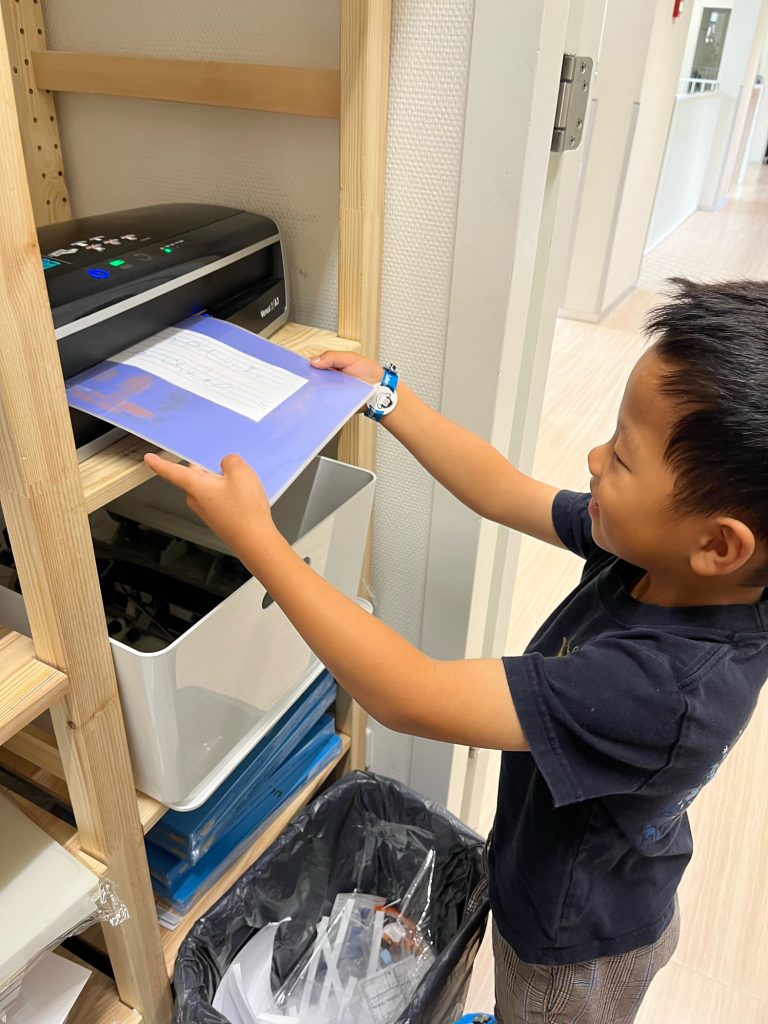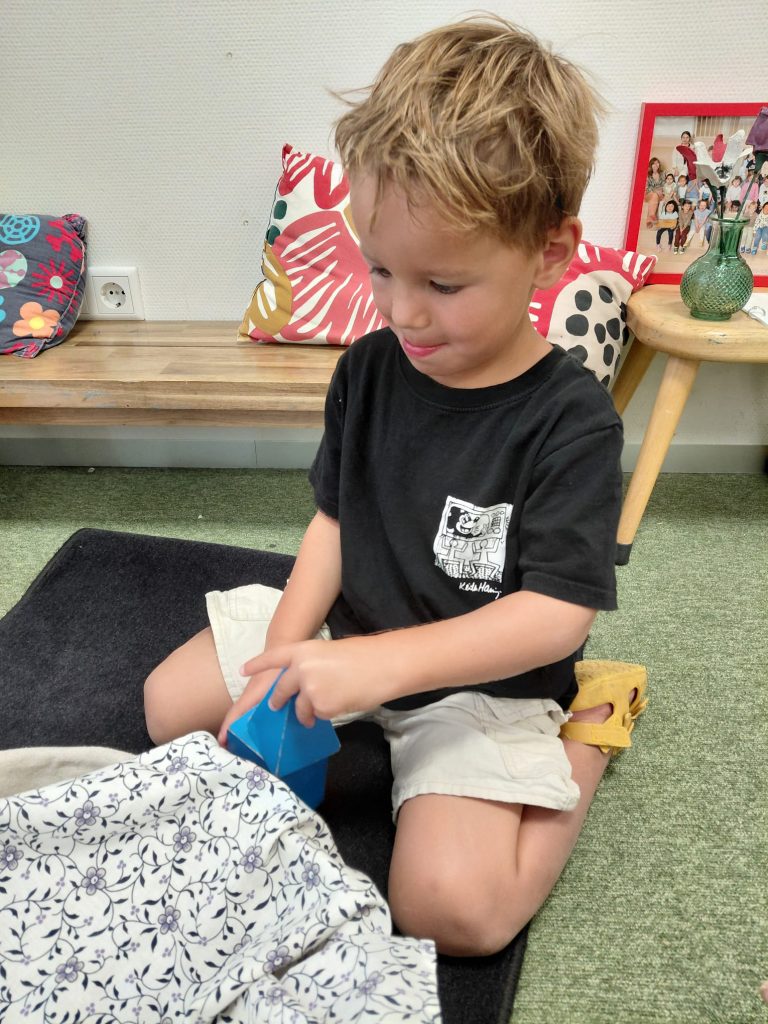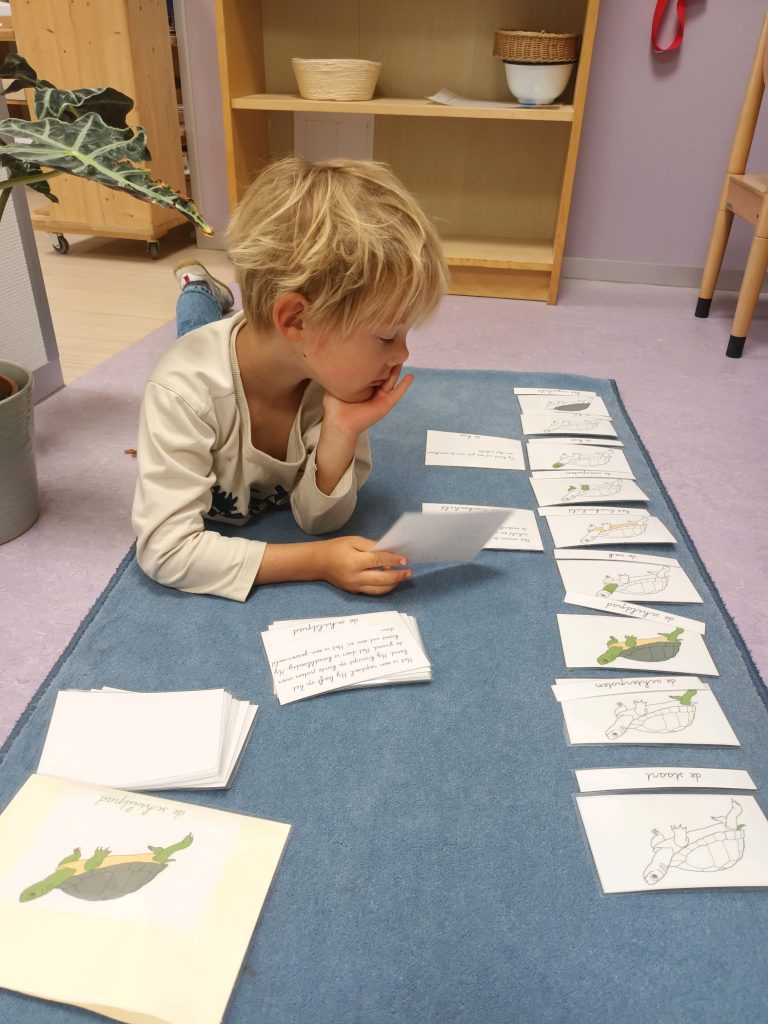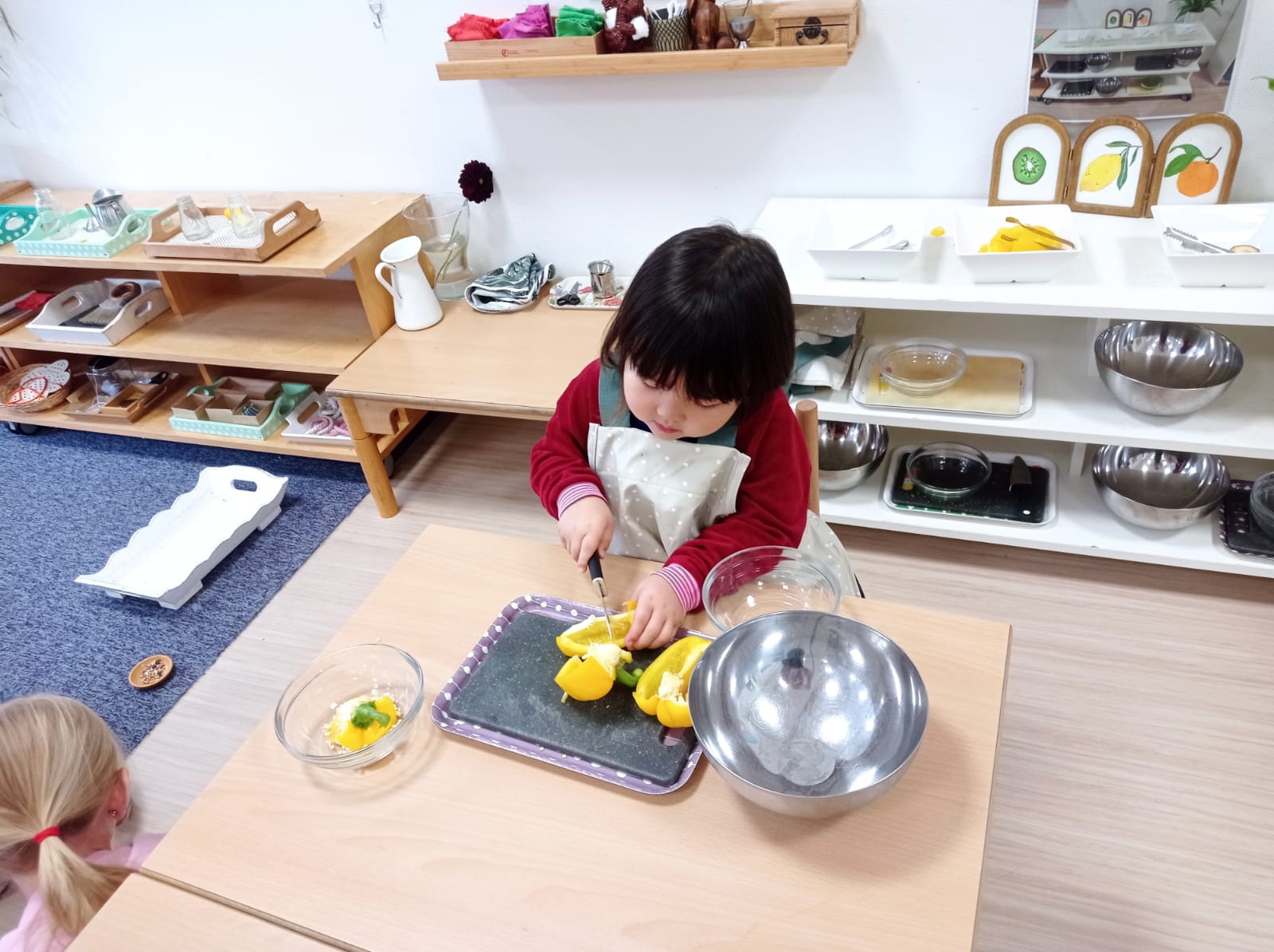The absorbent mind refers to the young child’s unconscious yet powerful ability to absorb everything from their environment—language, movement, habits, culture, even emotions.
Unlike adult learning, which is effortful and selective, the young child takes in everything around them effortlessly and without judgment. Montessori described it as a creative force, enabling the child to construct their personality, intelligence, and worldview—all by simply being present and engaged in a rich, stimulating environment.
Two Stages of the Absorbent Mind
Montessori divided the absorbent mind into two phases:
- 0–3 years: the unconscious mind
In this phase, the child absorbs without awareness. Everything they experience is imprinted deeply—language, movement, emotional tone, social behavior. This is also the time of the spiritual embryo, when the child is developing their inner self, just as the fetus developed its body in the womb. - 3–6 years: the conscious mind
The child begins to make more deliberate choices and seeks to repeat and master what was unconsciously absorbed. This is the age when children enter the Children’s House, where they are supported by hands-on materials, freedom of choice, and meaningful activity.


Why Does It Matter?
The absorbent mind is responsible for:
- Language acquisition: Without formal teaching, the child learns to speak their mother tongue fluently.
- Cultural integration: Customs, social expectations, and even table manners are absorbed with ease.
- Movement and independence: The child learns to eat, dress, pour water, and manage their body.
- Emotional and social awareness: Tone of voice, body language, and emotional responses are all absorbed.
- Early interest in abstract concepts: Because of the absorbent mind, children are naturally drawn to letters and numbers—long before the age that traditional systems introduce them.
In Montessori, we begin offering letters and mathematical concepts through hands-on materials during this sensitive period.
Why wait until age 6 or 7, when the child’s natural ability to absorb has already diminished? Instead, we follow the child’s inner drive to explore language and numbers when they are most receptive—now.
Everything is taken in—both the tangible and the intangible. This is why the early years are so critically important: they form the blueprint for who the child will become.
The Role of the Adult and the Environment
Because the child absorbs all that surrounds them, the adult’s role is crucial—not as a traditional teacher, but as a guide, observer, and most importantly: a model.
The child’s mind is not selective. They do not filter what is useful or appropriate. They absorb everything—our language, our attitudes, our tone of voice, our gestures, even our frustrations.
That’s why in Montessori, we have a clear guideline:
Never model what you don’t want the child to imitate.
We do not say, “This is how we don’t carry a chair.” We only ever demonstrate the correct way—quietly, carefully, gracefully—because the child is watching and absorbing, always.
As adults, this invites us to be deeply conscious of our behavior. It is not about being perfect, but about being intentional. We prepare the environment, but we also prepare ourselves—because we are part of the child’s environment.

A Window of Opportunity
The absorbent mind is a once-in-a-lifetime phase. Around age six, this powerful ability fades, and learning becomes more deliberate and effortful. What’s absorbed in these early years becomes the foundation for a lifetime.
Our responsibility—as parents and educators—is to provide a warm, responsive, and enriching environment that nourishes the child’s natural development. When we do this with care and awareness, we support the child not only in learning about the world—but in becoming fully themselves.

